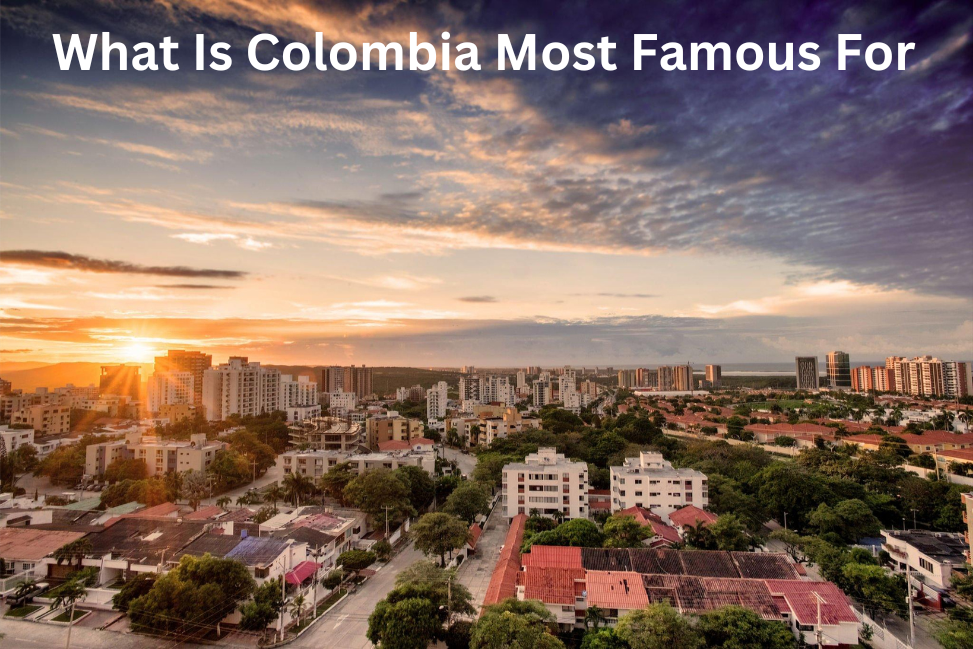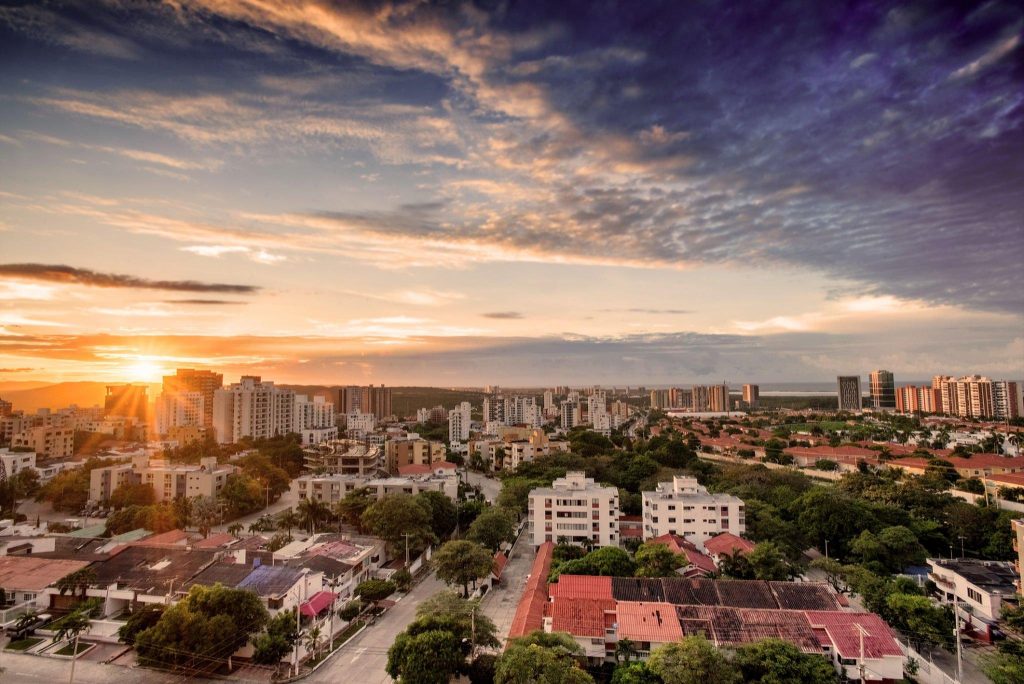
Colombia, a country that pulsates with vibrant life, has earned its place on the global stage for a multitude of reasons. From its iconic figures to its breathtaking landscapes, the nation’s rich tapestry captivates the imagination and invites travelers to embark on a journey of discovery.
Colombia’s rich identity is a tapestry woven from a diverse array of threads, each symbolizing a unique aspect of its culture, history, and breathtaking natural beauty.
As we delve into the lives of celebrated individuals who have made a lasting global impact, we’ll unravel the captivating tales that have profoundly influenced Colombia’s artistic and literary heritage. For a taste of another captivating story of culture and identity, check out “the spirit of Texas” on Tales of Travelers.
The architectural gems and landmarks that grace its terrain will transport us to otherworldly landscapes and paradises of tranquility. From the enchanting rhythms of its music to the untouched beauty of its rainforests, Colombia beckons us to explore, experience, and embrace its diversity.
In the following sections, we’ll delve into the captivating attributes that Colombia is famous for. We’ll uncover the allure of its culinary treasures, delve into the heart of its history, culture, and traditions, celebrate its passion for sports and dance, and venture into the architectural marvels and iconic landscapes that define its character.
Contents
- 1 Geographical Position
- 2 Bandeja Paisa: A Culinary Delight
- 3 Arepas: Colombia’s Beloved Snack
- 4 Ajiaco: A Hearty Colombian Soup
- 5 Colombian Coffee: A Global Icon
- 6 Exotic Fruits: Nature’s Bounty
- 7 The Emerald Isle: Rich Biodiversity
- 8 Folkloric Festivals: Celebration of Tradition
- 9 Colombian Carnival: A Colorful Extravaganza
- 10 Cycling: Navigating Challenging Terrain
- 11 Game of Tejo: Ancient Entertainment
- 12 Salsa Capital of the World: Rhythms and Moves
- 13 Cartagena: Colonial Charm by the Caribbean
- 14 Bogota: Urban Metropolis with Andean Flair
- 15 Conclusion
Geographical Position
Colombia’s strategic geographical position situates it at the crossroads of South America, giving rise to a captivating fusion of diverse landscapes and cultures. Nestled in the northwestern corner of the continent, Colombia shares its borders with Venezuela, Brazil, Peru, Ecuador, and Panama.
This unique location affords Colombia easy access to both the Caribbean Sea and the Pacific Ocean, contributing to its remarkable cultural and natural richness.
If you’re intrigued by such intriguing destinations, you’ll want to explore the allure of Indianapolis, which offers its own unique blend of attractions and experiences.
Dive deeper into The allure of Indianapolis on the Tales of Travelers page dedicated to Indiana to uncover what makes this city a must-visit destination.
The country’s diverse topography ranges from soaring Andean mountains to lush rainforests and arid deserts. The Andes Mountains run through the western part of Colombia, shaping its rugged terrain and fertile valleys.
The Amazon Rainforest covers a significant portion of the country, showcasing an astounding array of plant and animal species.
Colombia’s coastline along the Caribbean Sea boasts pristine beaches and coastal plains, while the Pacific coast is characterized by dense jungles and mangroves. The geographical diversity contributes to a wide range of climates, from tropical rainforests to temperate highlands.
Bandeja Paisa: A Culinary Delight
Ah, the perennial debate—should it be called “Taylor Ham” or “Pork Roll”? Regardless of what you call it, this food item is deeply embedded in New Jersey’s food culture.
The delicious meat product was originally introduced by John Taylor in the 1850s and has been a staple of the Garden State’s culinary scene ever since.
While many regions have their culinary specialties, exploring the charm of Maine unveiled offers a delightful journey into another state’s iconic offerings.
Adding to the complexity of flavors are the meats that adorn the platter. Bandeja Paisa traditionally features grilled or pan-fried beef, chorizo sausage, and chicharrón, which is crispy pork belly. These meats infuse the dish with smoky, savory, and slightly spicy notes that are a true delight for the taste buds.
Arepas: Colombia’s Beloved Snack
Arepas are a quintessential part of Colombian cuisine, cherished for their delicious taste and versatility. These round, flatbreads are made from maize dough and are a staple in the diets of Colombians from all walks of life.
Arepas can be enjoyed as a quick snack, a hearty breakfast, or even as a side dish during meals. If you’re interested in exploring more about regional delicacies and their cultural significance, you might also want to learn about the Best lighthouse history in Maine, which is known for its rich culinary heritage. Discover the unique flavors and traditions that make Maine a captivating destination for food enthusiasts.
The preparation of arepas involves mixing maize flour with water and a pinch of salt to form a dough. The dough is then shaped into flat, round discs and cooked on a griddle or skillet until they develop a golden-brown crust. The result is a comforting treat with a slightly crispy exterior and a soft, doughy interior.
What sets arepas apart is their ability to accommodate a wide range of fillings and toppings. From traditional options like cheese, ham, and eggs to more contemporary choices like avocado, shrimp, or even sweet ingredients like chocolate and condensed milk, there’s an arepa for every palate.
Ajiaco: A Hearty Colombian Soup
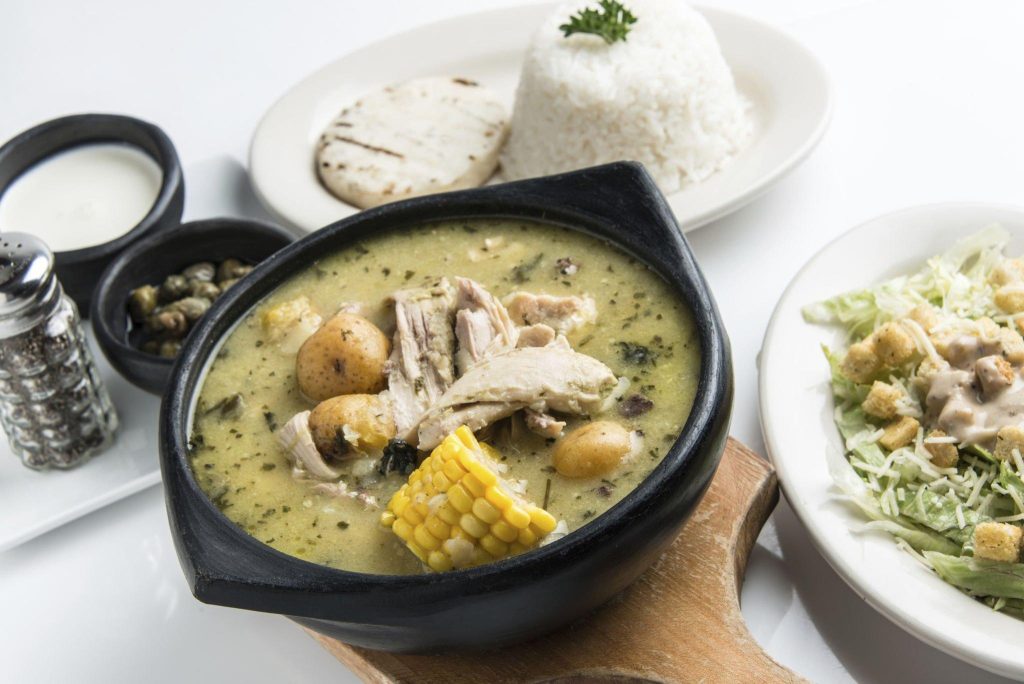
Ajiaco, a beloved Colombian dish that embodies the country’s rich culinary heritage and diverse flavors, holds a special place in the hearts of Colombians as a symbol of comfort and tradition. The star of the show in Vermont’s Quirky Delights is the unique blend of potatoes used in its preparation, featuring three types: the native papas criollas, the starchy white potatoes, and the Andean potatoes.
Ajiaco’s flavorful broth is created by simmering chicken with a medley of herbs and spices. The combination of ingredients, including corn on the cob and capers, imparts a distinctive taste that is both hearty and invigorating.
The soup is typically garnished with a generous dollop of sour cream, known as “crema de leche,” which adds a creamy texture and balances the robust flavors.
Colombian Coffee: A Global Icon
Colombian coffee holds a special place in the hearts of coffee enthusiasts worldwide, renowned for its exceptional quality and distinctive flavor profile. Nestled within Colombia’s lush landscapes, coffee plantations thrive thanks to the country’s ideal climate and elevation.
This geographical advantage, coupled with meticulous cultivation and processing practices, has earned Colombian coffee a reputation as one of the finest coffees globally.
The journey of Colombian coffee begins in the fertile valleys and mountains of the Andes, where Arabica coffee plants flourish at elevations ranging from 1,200 to 1,800 meters above sea level.
This high-altitude environment, coupled with the right combination of rainfall and sunlight, contributes to the beans’ unique flavors and aromas.
Exotic Fruits: Nature’s Bounty
Colombia’s tropical climate and diverse geography have gifted the country with an abundance of exotic fruits that tantalize the senses and offer a delightful culinary experience. From the vibrant colors to the unique flavors, these fruits showcase the remarkable biodiversity that Colombia is known for.
1. Guava: Bursting with a sweet and slightly tangy flavor, guava is a tropical gem. It can be enjoyed fresh, juiced, or used in jams and desserts. Rich in vitamins and antioxidants, guava is a nutritional powerhouse.
2. Passion Fruit: Known for its aromatic scent and refreshing taste, passion fruit has a unique combination of sweet and tart flavors. Its vibrant orange-yellow pulp is commonly used in juices, cocktails, and desserts.
The Emerald Isle: Rich Biodiversity
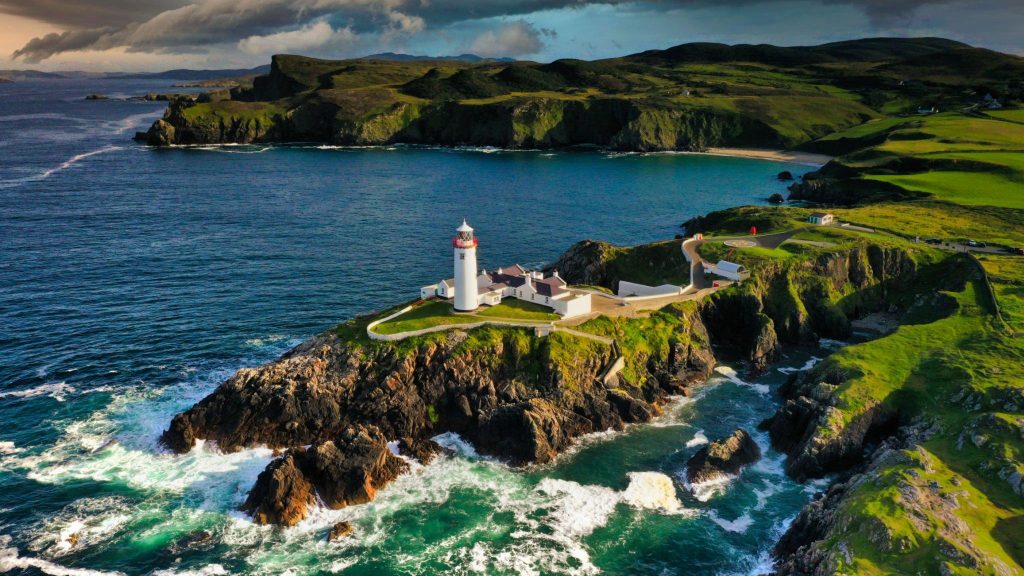
Colombia, often referred to as the “Emerald Isle,” is a natural treasure trove that boasts remarkable biodiversity. This nickname is a nod to the country’s lush rainforests, verdant landscapes, and the richness of its flora and fauna.
Situated in the northwestern corner of South America, Colombia’s diverse ecosystems are teeming with life, making it one of the most biodiverse nations on the planet.
The Amazon Rainforest, a prominent feature of Colombia’s landscape, is a hub of biodiversity that houses countless species found nowhere else on Earth.
From colorful birds and elusive mammals to unique insects and vibrant plants, the Amazon is a testament to the intricate web of life that thrives within its boundaries.
In addition to the Amazon, Colombia’s Andean mountains, coastal regions, and wetlands contribute to its exceptional biodiversity. The country’s varied climates and topographies create diverse habitats that support a wide array of species.
From jaguars and tapirs to orchids and bromeliads, Colombia’s ecosystems are a haven for both charismatic megafauna and lesser-known organisms.
Folkloric Festivals: Celebration of Tradition
Colombia’s folkloric festivals are vibrant celebrations that showcase the country’s rich cultural diversity and historical heritage. These festivals are a colorful tapestry of music, dance, art, and traditions that have been passed down through generations. Each region of Colombia boasts its own unique festivals, often rooted in indigenous, African, and Spanish influences.
These festivals offer a window into Colombia’s soul, allowing both locals and visitors to immerse themselves in the country’s vibrant tapestry of traditions.
The festivities are characterized by elaborate costumes, lively music, and exuberant dance performances that reflect the distinct cultural identities of various communities.
One of the most famous folkloric festivals is the Barranquilla Carnival, held in the coastal city of Barranquilla. This carnival is a dazzling display of colors, rhythms, and creativity, drawing thousands of participants and spectators.
Colombian Carnival: A Colorful Extravaganza
The Colombian Carnival is a lively and exuberant celebration that showcases the nation’s rich cultural diversity and vibrant spirit. Held annually in the city of Barranquilla, the carnival is one of the largest and most famous in Colombia. This grand extravaganza typically takes place in February, attracting locals and tourists alike to revel in its festive atmosphere.
The carnival is a dynamic fusion of traditions, music, dance, and elaborate costumes that reflect Colombia’s indigenous, African, and Spanish heritage.
The streets come alive with a riot of colors as participants don vibrant outfits and intricate masks, paying homage to the country’s varied cultural influences.
Music is at the heart of the Colombian Carnival, with pulsating rhythms of cumbia, vallenato, and other traditional genres filling the air. The infectious beats invite everyone to join in the celebrations, dance, and move to the music. Parades featuring elaborate floats, dancers, and musicians wind their way through the city, captivating onlookers with their energy and creativity.

Cycling in Colombia isn’t just a sport; it’s a way of life. With its diverse landscapes and challenging terrain, Colombia has become a haven for cyclists seeking adventure, breathtaking scenery, and a true test of endurance.
From steep mountain climbs to winding roads through lush valleys, cyclists can immerse themselves in the beauty of this South American gem while pushing their limits on the pedals.
Cycling Culture and Passion: Colombians have a deep-rooted passion for cycling, and it’s not uncommon to see both professional athletes and locals alike pedaling through bustling cities and remote villages.The country’s rich cycling history includes producing world-class riders who have excelled in international competitions like the Tour de France and Giro d’Italia.
Game of Tejo: Ancient Entertainment
The Game of Tejo, a traditional Colombian sport, is a unique and captivating form of entertainment that combines skill and excitement in a distinct way. Originating from the pre-Columbian era, this game has deep cultural roots and remains an integral part of Colombian leisure activities.
In the Game of Tejo, players take turns throwing metal discs, known as “tejos,” at a target located at the opposite end of an alley. This target is typically made up of clay-filled pockets, each containing a small explosive charge. The objective is to land the tejo inside the pockets, triggering a small explosion that adds a thrilling element to the game.
This explosive twist makes the Game of Tejo unlike any other sport. The sound of the explosions, along with the competitive spirit of the players, creates an atmosphere of camaraderie and excitement. Players hone their aim and strategy, aiming to hit the target with precision and accuracy.
Salsa Capital of the World: Rhythms and Moves
In the rich tapestry of American history, states like New Jersey hold a significant position, each with its unique contributions to the nation’s cultural fabric. However, when it comes to exploring the remarkable sites and attractions that define a state’s character, one must venture beyond the Garden State.
Virginia, with its storied history and breathtaking landscapes, beckons travelers to uncover its treasures. From its colonial heritage to its stunning natural beauty, Virginia’s notable sites offer a captivating glimpse into the heart of this diverse state.
The history of salsa in Calí is deeply intertwined with the city’s cultural fabric. Salsa music and dance have been an integral part of daily life, celebrations, and gatherings for decades. Locals and visitors alike can immerse themselves in the energetic and passionate atmosphere of Calí’s salsa scene.
The city boasts numerous salsa clubs, dance schools, and live music venues where both beginners and experienced dancers can sway to the rhythm. Salsa is more than just a dance; it’s a way of expression, a connection to heritage, and a celebration of unity.
Cartagena: Colonial Charm by the Caribbean
Cartagena, a captivating coastal city located on Colombia’s Caribbean coast, is a treasure trove of history, culture, and architectural beauty. Steeped in colonial charm, Cartagena’s well-preserved old town is a UNESCO World Heritage site that takes visitors on a journey back in time. The city’s cobblestone streets, colorful buildings, and imposing fortifications tell stories of its strategic significance and rich past.
Historical Significance: Founded in 1533 by Spanish conquistadors, Cartagena quickly became a crucial port for trade and exploration. Its defensive walls and fortresses, such as the iconic Castillo San Felipe de Barajas, stand as a testament to the city’s historical importance.
Bogota: Urban Metropolis with Andean Flair
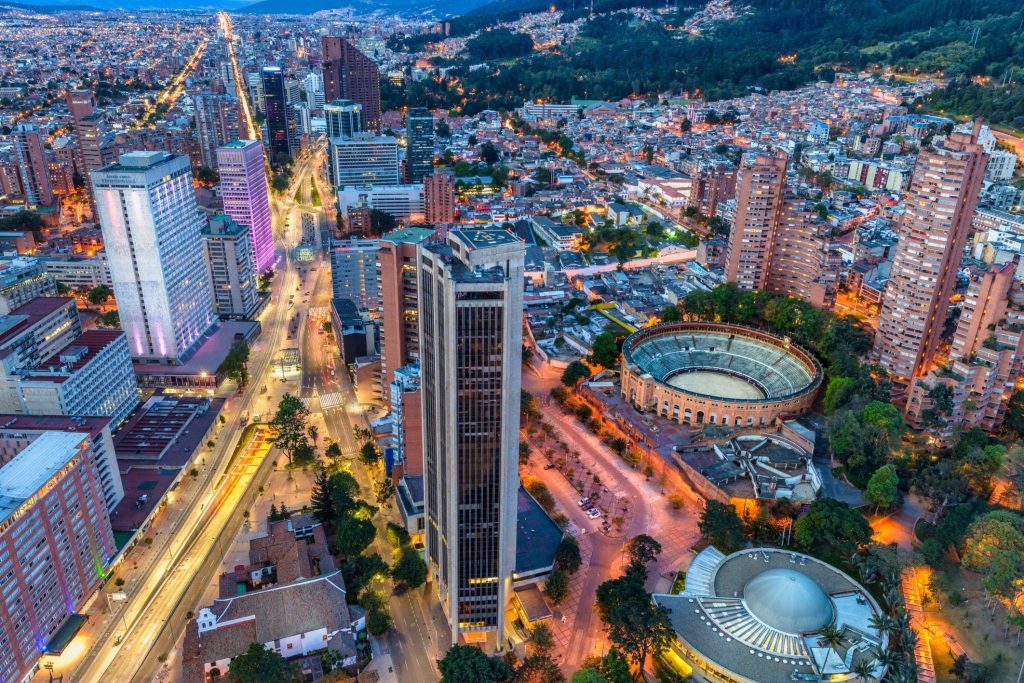
Bogota, the capital city of Colombia, is a dynamic and vibrant metropolis that beautifully balances its rich history with modern urban developments. Nestled within the picturesque Andes Mountains, Bogota is not only the political and economic center of the country but also a cultural hub that captivates visitors with its diverse offerings.
The city’s historic center, known as La Candelaria, is a treasure trove of colonial architecture, charming cobblestone streets, and vibrant street art. As you stroll through its alleys, you’ll encounter historic churches, museums, and government buildings that reflect Colombia’s past and present.
Bogota is also a city of contrasts, where modern skyscrapers stand side by side with centuries-old buildings. The bustling neighborhoods of Chapinero, Zona Rosa, and Usaquén offer a glimpse into the contemporary urban lifestyle, with trendy cafes, upscale boutiques, and lively nightlife venues.
Conclusion
In conclusion, Colombia’s fame rests on its captivating culture, diverse cuisine, lush landscapes, and remarkable individuals who have shaped its history.
From the flavors of Bandeja Paisa to the rhythms of salsa, Colombia’s unique identity has left an indelible mark on the world. Exploring its geographical wonders and cultural treasures is an invitation to embrace the richness of this vibrant nation.
In conclusion, Colombia’s fame is a tapestry woven with vibrant threads of culture, nature, and history. From the enchanting melodies of salsa to the towering wax palms of the Cocora Valley, Colombia’s allure knows no bounds. Its rich tapestry is interwoven with the aromas of Bandeja Paisa and the magical realism of Gabriel Garcia Marquez’s tales.
As a nation brimming with diverse landscapes, lively festivals, and unforgettable experiences, Colombia has rightfully earned its place as a global treasure, beckoning travelers to discover the wonders that make it truly extraordinary.

